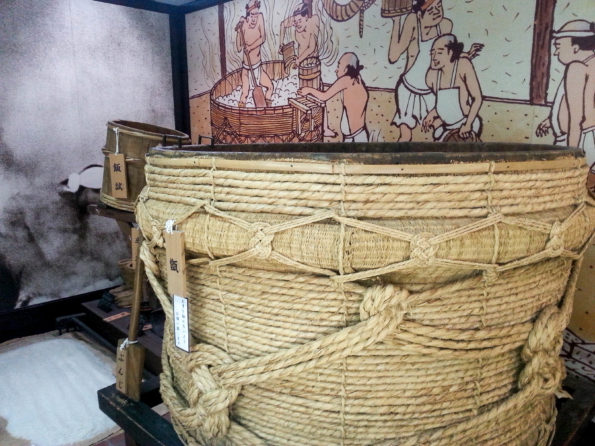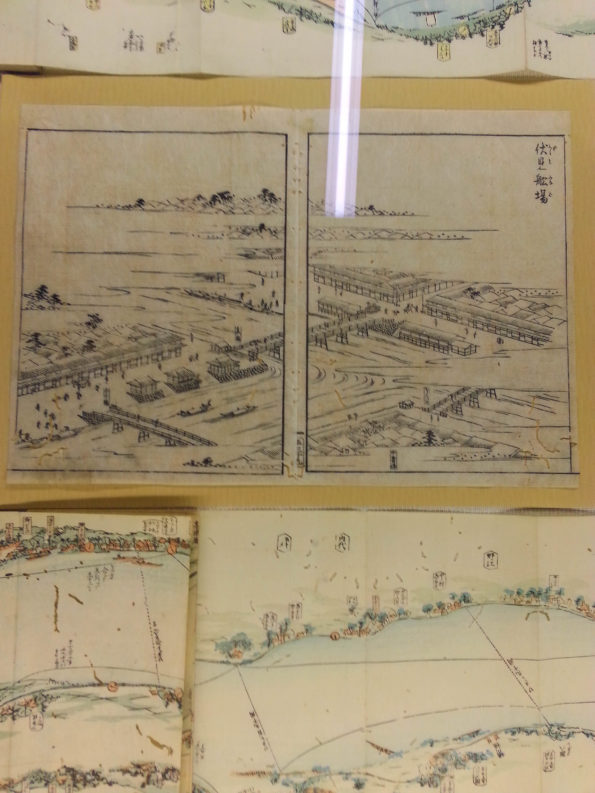Sake Tasting & Museum in Fushimi, Kyoto
Published by CamDarling on
Drinking sake is as Japanese as you can get. It’s more than an alcoholic beverage, it’s an entire history and tradition. Sake tasting should be part of every travelers itinerary when visiting Japan. And no better place to do it than in Fushimi, Kyoto.
Fushimi Sake District is one of Japan’s most prominent and historic sake venues. After more than 1000 years of brewing, the clean waters of Fushimi still make some of the highest quality sakes in the world. As a tourist, it’s well-worth the trip to delight your taste-buds and learn a little about this ancient Japanese craft.
Visit Gekkeikan Okura Sake Museum
This Gekkeikan Brewery has two sections, the Sake Museum and the Mini-Brewery next door. The Mini-Brewery dates back to 1909 but wasn’t acquired by Gekkeikan Sake Company Ltd. until 1982. The Mini-Brewery has a production volume of 40 Kiloliters per year which is roughly the same capacity of the original brewery back in 1637. Today, the California plant alone produces over 7,500 Kiloliters of Sake each year!
- Admission Fee: 300 Yen ($3 USD) per person
- Hours: 9:30-4:30
- English Brochure
- Reserve a day in advance for a tour of the Mini-Brewery next door
Japan is famous for the longevity and continuity. As we covered in our Uji article, the same family tea house has been in operation for over 1000 years and 24 generations. The same is true for Japan’s Sake industry. Drinking Sake has been a cultural tradition since the Nara period in the 8th century. The drink was even part of life at the imperial court and it’s production was heavily regulated by the Shogun during periods of rice shortages.
The Gekkeikan Sake Company has its roots stretching back to 1637, over 380 years. The brewery was founded by Jiemon Okura along the riverfront in Fushimi, Kyoto. The brewery was called “Kasagiya” and the first Sake they produced was called “Tama no Izumi” (Jewel of the Fountain).
Traditionally, different Sakes were brewed in each season as the fermentation was influenced by the temperature and humidity. But Gekkeikan opened Japan’s first all-season brewery in 1961.
Today, Gekkeikan Sake has a distillery in California that opened in 1989 and distribution to Europe, Canada and South America, making it a truly global brand.
Other Sake Tasting & Tours in Kyoto
- Sake Bar Yoramu: Open 6pm-12am (Cash Only)
- Jo Social Sake Bar: Open at 6pm-10:30pm (Trip Advisor)
- Sake Bar Asakura: Open at 7pm-1am
- Fushimi Yume Hyakushu Cafe: Open 10:am-4:30pm
- Aburacho Sake Bar: Open 10am-9pm
- Kizakura Kappa Museum & Restaurant: Open 10am-5pm
- Horino Memorial Museum: Open 11am-5pm
- MatsuiShuzo Brewery: Open 9am-6pm
Online Sake Books & Guides
- Kyoto Fushimi Sake Guide – Fushimi Sake Brewers Association
- Fushimi Sake District – Japan-Guide
- Sake Breweries of Tokyo, Kyoto, and Kobe – Jim Stewart
- Sake Handbook: All the information you need to become a Sake Expert – John Gauntner
- 4 Recommended Btrewery Tours in Kyoto – Wow! Japan
History of Sake in Japan
Sake is made purely from fermented rice, so the practice of making sake is believed to date back to when rice was first cultivated in Japan almost 2,000 years ago. The alcoholic content varies from 12-16% but now can be found as high as 20%. Sake is not a wine, the fermentation process is totally different, closer to making beer except for one key difference: The sugar conversion and fermentation happen at the same time (Glucose in the rice converts to sugar which converts to alcohol). This is called “Multi-parallel fermentation” and it is unique to Sake.
Similarly to Wine, Sake can be enjoyed warm, chilled or at room temperature. It was traditionally served warm, but that’s because it tasted rough and woody… Today, Sake is brewed in modern facilities and bottled, preserving a subtle and smooth taste. In the past, Sake was fermented in cedar tanks and shipped in cedar casks, so it tasted a little woody, you can still buy this more authentic “Taru-Sake”.
If you want to learn more about Sake, check out Master of Sake or Sake World.
The History of Fushimi Sake District
The history of Sake in Fushimi is really a story of location. The district of Fushimi is located at the merging of three rivers between Kyoto, the ancient imperial capital, and Osaka, one of the largest cities in Japan. Historically, trade has always been conducted along the largest waterways. Fushimi grew into a prosperous warehousing and shipping district as early as the mid 17th century. See maps below.
In our Osaka Castle article, we mentioned the three unifies of Japan: One was Toyotomi Hideyoshi who ordered the construction of Fushimi Castle, gaining the region even more importance both politically and economically. As the imperial court was moved between Kyoto and Edo (Tokyo) every year, Fushimi became an important stopping place for riverboats.
But why did Fushimi become Japan’s most prominent sake district and remains the second biggest production site in Japan?
The name Fushimi comes from “Fusu” and “Mizu”, which means “hidden water”. The underground water in Fushimi is famous for clarity and softness, which as it turns out makes for a delicious and high quality sake and inspiration behind Gekkeikan’s first sake: “Jewel of the Fountain”.
Directions to the Sake Museum
Getting to Fushimi by Bike
Ride south from Gion or Kyoto Station for 45 minutes, follow the canals all the way to the Uji River. I recommend stopping by Fushimi Inari Taisha Shrine and Fushimi Castle on the way!
Getting to Fushimi by Train from Kyoto Station
- Take the Nara line to Tofukuji Station (1 Stop)
- Switch train lines to the Kaihen Main Line (8 Stops)
- Get off at Chushojima Station (350 Yen or $3.50 USD)
- Walk slightly North East to the Museum





















0 Comments